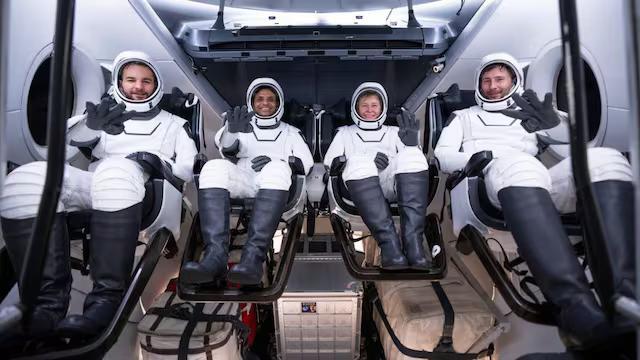
Why will Indian astronaut Shubhanshu Shukla’s return to Earth take 22 hours?
In a significant milestone, India’s Shubhanshu Shukla and his Axiom-4 crewmates have begun their journey back to Earth from the International Space Station (ISS). The journey, which is expected to take around 22.5 hours, is a crucial phase that requires precise planning and execution to ensure a safe landing.
According to reports, the spacecraft must first perform engine burns to safely distance itself from the ISS. This is done to prevent any risk of collision and initiate what is known as “free flight”. During this phase, the spacecraft will orbit the Earth independently for several hours before entering the Earth’s atmosphere for a controlled descent.
So, why does this process take so long? There are several factors that contribute to the extended duration of the journey. In this blog post, we will delve into the reasons behind the 22-hour return journey of Indian astronaut Shubhanshu Shukla and his crewmates.
Safely distancing the spacecraft from the ISS
The first and most crucial step in the return journey is to safely distance the spacecraft from the ISS. This is done by performing engine burns that slow down the spacecraft and create a safe buffer zone between the two vehicles. This buffer zone is essential to prevent any risk of collision, as the ISS is a massive structure with a large cross-sectional area.
The engine burns are carefully planned and executed to ensure that the spacecraft slows down to a safe speed before separating from the ISS. This process is critical, as any collision or close approach between the two vehicles could have catastrophic consequences.
Orbiting the Earth independently
After successfully separating from the ISS, the spacecraft enters a period of “free flight”. During this phase, the spacecraft orbits the Earth independently, moving at a speed of around 17,500 miles per hour (28,200 km/h). This high-speed orbit allows the spacecraft to maintain a safe distance from the ISS and other orbiting vehicles.
The spacecraft will remain in this orbit for several hours, performing a series of orbital maneuvers to adjust its trajectory and prepare for re-entry. This phase is critical, as it allows the spacecraft to maintain its momentum and ensure a safe landing.
Waiting for the right orbital position
The next phase of the journey involves waiting for the right orbital position of the Earth. The spacecraft must wait until it reaches the optimal position to ensure a safe landing. This involves waiting for the spacecraft to align with the Earth’s atmosphere, taking into account factors such as wind direction and speed.
The right orbital position is critical, as it allows the spacecraft to enter the Earth’s atmosphere at the correct angle and speed. This ensures a controlled descent and a safe landing, minimizing the risk of any damage or injury to the crew.
The journey back to Earth
The final phase of the journey is the controlled descent into the Earth’s atmosphere. This involves slowing down the spacecraft using a combination of atmospheric drag and retro-propulsion. The spacecraft will then deploy its parachutes and landing gear, preparing for touchdown.
The entire journey, from the initial engine burns to the final landing, takes around 22.5 hours. This extended duration is necessary to ensure a safe and controlled return to Earth, taking into account the complex factors involved in space travel.
Conclusion
The return journey of Indian astronaut Shubhanshu Shukla and his Axiom-4 crewmates is a testament to the complexity and precision required in space travel. The 22.5-hour journey is a critical phase that involves careful planning and execution to ensure a safe and controlled landing. As we continue to push the boundaries of space exploration, it is essential to understand the intricacies of space travel and the factors that contribute to the extended duration of space missions.
Source:






